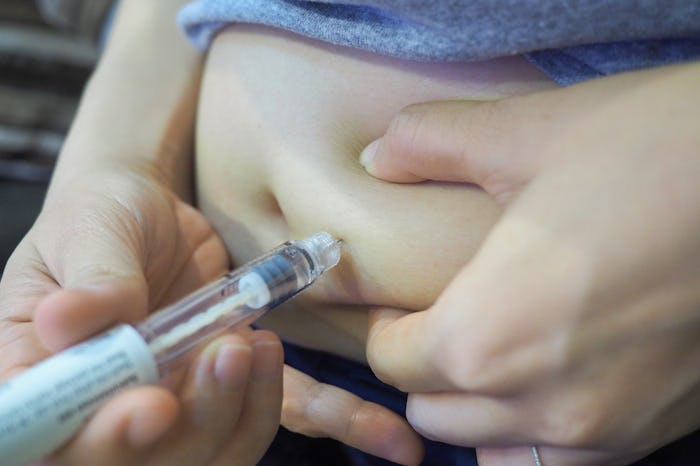News

The Price Tag That Comes With Fertility Treatments Deters Hopeful Many Parents-To-Be
The high costs of raising a child are well documented. Between diapers, formula, strollers, cribs, car seats, and the clothes they're constantly outgrowing, parents can easily spend six figures over the course of 18 years. But for some, even getting pregnant can be a huge financial strain. In fact, a survey conducted by CoFertility, a platform dedicated to providing information about fertility health, treatment and options to hopeful parents-to-be, found that the cost of fertility treatments is a big deterrent for many in the United States.
In a survey of current and former fertility treatment patients, CoFertility found that 86 percent reported having either forgone or considered forgoing a doctor-recommended treatment option due to the cost. Another 65 percent reported having to borrow money, take out loans, or simply cut back on other expenses in an effort to afford the out-of-pocket costs associated with their fertility treatment.
That's similar to a 2015 study from Prosper Marketplace, which found that 70 percent of women seeking fertility treatment went into at least some debt during the process with 44 percent taking on more than $10,000 in debt. According to CoFertility, only 24 percent of those surveyed said they were able to cover the cost of their fertility treatment without having to take on debt or cut back expenses.
For those that reported having to cut back expenses, CoFertility found that 65 percent said they'd cut out vacations to help pay for fertility treatments. Another 48 percent reported cutting back on going out and 32 percent said they'd cut back on car-related expenses to help cover the cost. Others have turned to crowdfunding in hopes of raising the needed funds. In 2018, Women's Health reported finding more than 6,500 GoFundMe campaigns dedicated to fundraising for fertility treatments.
While the cost of fertility treatments can vary from a couple hundred dollars for oral fertility medications to tens of thousands of dollars for an in vitro fertilization (IVF) cycle, a number of additional associated costs like lab tests, doctor bills, co-pays, and travel expenses can quickly send the final bill skyrocketing. In fact, CoFertility found that many respondents estimated the total cost of their fertility treatment would equal close to $100,000.
Of course, the expensive nature of fertility treatments is well documented. The Center for Human Reproduction has estimated that one cycle of IVF in the United States cost, on average, $23,000. The average cost of IVF with an egg donor was placed at around $38,000, according to a study from the American Society for Reproductive Medicine. What's more, when asking patients undergoing fertility treatment to track their out-of-pocket expenses for 18 months, that same study found the average couple was spending $19,234 out-of-pocket with the average cost of each additional cycle of treatment placed at $6,955. These can be daunting numbers when you consider that the median household income was reported to be $61,372 in 2017 by the U.S. Census Bureau.
And unfortunately, health insurance often isn't as much of a help many hope it will be. According to VeryWellFamily.com, 75 percent of private insurance policies available in the United States don't adequately cover infertility treatments. Less than half (45 percent to be exact) of the current and former fertility patients CoFertility surveyed reported having some form of insurance which covered infertility treatment. Of those, 37 percent reported having to spend three to nine hours each month fighting with their provider to have their treatments covered or to understand their coverage options.
But even having insurance doesn't protect patients from the high out-of-pocket costs often associated with fertility treatments. CoFertility found that even those with insurance had to pay tens of thousands of dollars in out-of-pocket expenses. Of those surveyed by the platform, 44 percent said they'd already spent more than $25,000 out-of-pocket while 27 percent reported having spent $50,000.
While some may find success in obtaining benefits, grants, or insurance to help cover the expense of fertility treatment, it's clear that cost remains one of the largest barriers to access for many hopeful parents-to-be.